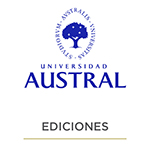Some Issues on End of Life, Euthanasia, and Nourishment and Hydration in Vegetative-State Patients
Abstract
The end of life raises various questions, some of the most important of which are addressed in this paper from a legal perspective. This paper argues that there is no “right to die,” but rather a “right to live with dignity until the last moment.” This implies the recognition of the ontological dignity of every human life. It is the same dignity that grants patients the right to refuse some medical treatment, even in the face of death. But this right is not absolute; it is limited by dignity itself, and euthanasia is a practice that exceeds this limit. The principle of proportionality is essential for judging the legality of refusing treatment. Both the prohibition against euthanasia and the principle of proportionality are enshrined in Argentine legislation, even if the legislative technique requires a special interpretative effort. The wording of the regulations could raise doubts about the case of nourishment and hydration of a vegetative-state patient. The solution to this issue is that the vegetative state is not a terminal state, and furthermore, nourishment and hydration can only be suspended when they no longer fulfill their functions or cause complications in the patient’s condition.
Downloads
References
Absuelta tras aplicar la eutanasia a una paciente que dio señales contradictorias sobre su deseo a morir. (11 de septiembre de 2019). ABC. https://www.abc.es/sociedad/abci-holanda-absuelve-doctora-aplico-eutanasia-paciente-alzheimer-201909111355_noticia.html.
Alida Asscher, E. C. y Van de Vathorst, S. (2019). First prosecution of a Dutch doctor since the Euthanasia Act of 2002: What does the verdict mean? Journal of Medical Ethics, 46, 72-74. https://jme.bmj.com/content/medethics/46/2/71.full.pdf.
Andruet, A. S. (h). (2001). Ley holandesa de “Terminación de la vida a petición propia”. Nuestra consideración acerca de la eutanasia. DS, 9(2), 169-199.
Andruet, A. S. (h.). (2015). Elementos para una heurística adecuada del fallo sobre muerte digna de la Corte Suprema de la Nación (el caso ‘M. D.’). SJA, 19/08/2015. AR/DOC/5198/2015.
Aznar, J. (2021). The slippery slope of euthanasia. Medicina e Morale, XXX, 1-10.
Bender, A., Jox, R., Grill, E., Straube, A. y Lulé, D. (2015). Persistent Vegetative State and Minimally Conscious State. A systematic review and meta-analysis of diagnostic procedures. Deutsches Arzteblatt International, 112(14), 235-242.
Brody, H. (1998). Physician-Assisted Suicide in the Courts: Moral Equivalence, Double Effect, and Clinical Practice. Minnesota Law Review, 82, 939-963.
Calipari, M. (2007). Curarse y hacerse curar: Entre el abandono del paciente y el encarnizamiento terapéutico (1a ed.). Educa.
Cámara Villar, G. (2021). La regulación de la eutanasia y del suicidio asistido en el mundo. Panorama general y comparado. Anuario de Derecho Eclesiástico del Estado, XXXVII, 452-459.
Cañamares Arribas, S. (2016). La reciente jurisprudencia del Tribunal de Estrasburgo y del Tribunal Supremo en Canadá en relación con el derecho a la muerte digna. Revista Española de Derecho Constitucional, 108, 337-356.
Childs, N. L. y Mercer, W. N. (1996). Late Improvement in Consciousness after Post-Traumatic Vegetative State. The New England Journal of Medicine, 334, 24-25.
Congregación para la Doctrina de la Fe. (1980). Declaración Iura et bona. Acta Apostolicae Sedis, (72).
Congregación para la Doctrina de la Fe. (2007a). Respuestas a algunas preguntas de la Conferencia Episcopal Estadounidense sobre la alimentación y la hidratación artificiales. Acta Apostolicae Sedis, (99), 820-821.
Congregación para la Doctrina de la Fe. (2007b). Artículo de Comentario. OR, 15.9.2007, pp. 1-5.
Craig, G. (1994). Is Sedation without Hydration or Nourishment in Terminal Care Lawful? Medico-Legal Journal, 62(4), 198-201.
Craig, G. (2008). Palliative Care in Overdrive: Patients in Danger. American Journal of Hospice and Palliative Medicine, 25(2), 155-160.
Darko Chudy, M. y Raguž, V. D. (2020). Chapter 36—Deep brain stimulation for treatment patients in vegetative state and minimally conscious state. En Deletis, V., Shilis, J. L., Sala, F. y Seidel, K. (Eds.), Neurophysiology in Neurosurgery: A Modern Approach (2ª ed., pp. 515-521). Academic Press.
Dicasterio para la Doctrina de la Fe. (2024). Declaración Dignitas infinita. Boletín de la Oficina de Prensa de la Santa Sede. https://press.vatican.va/content/salastampa/es/bollettino/pubblico/2024/04.html.
Gómez Sancho, M. (Coord.). (2015). Atención Médica al final de la vida: conceptos y definiciones. Grupo de Trabajo de la Organización Médica Colegial y Sociedad Española de Cuidados Paliativos. https://www.gacetamedicabilbao.eus/index.php/gacetamedicabilbao/article/view/38/0
Gorsuch, N. M. (2006). The future of assisted suicide and eutanasia. Princeton University Press.
Hervada, J. (1975). Los trasplantes de órganos y el derecho a disponer del propio cuerpo. Persona y Derecho, 2, 195-254.
House of Lords Select Committee on Medical Ethics. (1994). Medical Ethics: Select Committee Report. House of Lords Official Report, 554, 1344-1412. https://api.parliament.uk/historic-hansard/lords/1994/may/09/medical-ethics-select-committee-report.
Keown, J. (2018). Euthanasia, Ethics and Public Policy (2a ed.). Cambridge University Press.
Maiese, K. (2022). Vegetative state. MSD Manuals. https://www.msdmanuals.com/home/brain,-spinal-cord,-and-nerve-disorders/coma-and-impaired-consciousness/vegetative-state.
Marcos del Cano, A. M. (2021). ¿Existe un derecho a la eutanasia? Panorama internacional y análisis de la Ley Orgánica de la Eutanasia en nuestro país. Teorder, 29, 131-132.
Marzen, T. J., O’Dowd, M. K., Crone, D. M. y Balch, T. J. (1996). Suicide: A Constitutional Right? Reflections Eleven Years Later. Duquesne Law Review, 35, 264-271.
Montero, E. (2001). ¿Hacia una legalización de la eutanasia voluntaria? Reflexiones acerca de la tesis de la autonomía. Cuadernos de Bioética, 12(44), 27-43.
Montiel Boehringer, V. (2008). Retirar la alimentación e hidratación. Problema bioético en el paciente en Estado Vegetativo Permanente. IF Press.
Noé, E., Olaya, E., Colomer, C., Moliner, B., Ugart, P., Rodríguez, C., Llorens, R. y Ferr, J. (2019). Current validity of diagnosis of permanent vegetative state: A longitudinal study in a sample of patients with altered states of consciousness. Neurología (Sociedad Española de Neurología), 34(9), 589-595.
Ollero, A. (2001). Eutanasia y Multiculturalismos. Derecho, moral y religión en una sociedad pluralista. Cuadernos de Bioética, 12(44), 44-54.
Padilla, R. y Domina, A. (2016). Effectiveness of Sensory Stimulation to Improve Arousal and Alertness of People in a Coma or Persistent Vegetative State After Traumatic Brain Injury: A Systematic Review. The American Journal of Occupational Therapy, 70(3), 1-8.
Poder Ejecutivo Nacional. (2012). Proyecto de de la Nación y Comercial Código Civil. Mensaje del Poder Ejecutivo Nacional N˚ 884/2012. Infojus.
Pontificio Consejo para la Pastoral de los Asistentes Sanitarios. (1995). Carta de los Agentes Sanitarios. OR, 15.9.2007, 1-5.
Raus, K., Vanderhaegen, B. y Sterckx, S. (2021). Euthanasia in Belgium: Shortcomings of the Law and Its Application and of the Monitoring of Practice. The Journal of Medicine and Philosophy, 46, 80-107.
Real Academia Española. (1992). Diccionario de la lengua española (21a ed.). Espasa Calpe.
Requena Meana, P. (2017). ¡Doctor, no haga todo lo posible! De la limitación a la prudencia terapéutica (1a). Editorial Comares.
Riofrío Martínez-Villalba, J. C. (2019). Eutanasia y distanasia: Dos extremos opuestos. Revista de la Facultad de Jurisprudencia, 6, 289-310.
Rodríguez Molinero, M. (1992). Eutanasia. B. Especies de eutanasia. En Gran Enciclopedia Rialp (Vol. IX, p. 577). Rialp.
Sambrizzi, E. A. (2005). Derecho y eutanasia. Thomson Reuters-La Ley.
Sapag, M. (2010). El Derecho ante la muerte. Consideraciones jurídicas y morales en torno a la “eutanasia” y la “otonasia”. Revista de Derechos Humanos, 1, 171-192.
Silberberg, A., Robetto, J. y Achával, M. (2018). Eutanasia y distanasia: Dos extremos opuestos. Cuadernos de Bioética, XXIX(96), 137-146.
Smith, J. C. (1964). Muerte. En Lerner, B. (Ed.), Enciclopedia Jurídica Omeba (Tomo XIX, pp. 932-936). Editorial Bibliográfica Argentina Omeba.
Soria Sainz, J. L. (1992a). 1. Eutanasia. Estudio general. A. Noción e historia. En Gran Enciclopedia Rialp (Vol. IX, p. 577). Rialp.
Soria Sainz, J. L. (1992b). Eutanasia. 2. Juicio moral. En Gran Enciclopedia Rialp (Vol. IX, pp. 578-579). Rialp.
Soria Sainz, J. L. (1992c). Eutanasia. 3. La muerte sin dolor. En Gran Enciclopedia Rialp (Vol. IX, p. 579). Rialp.
Spaemann, R. (1988). Sobre el concepto de dignidad humana. Persona y Derecho, 19, 13-33.
The Linacre Centre for Health Care Ethics. (1994). Euthanasia and clinical practice. A Working Party Report. En Gormally, L. (Ed.), Euthanasia, Clinical Practice and Law (pp. 48-50). The Linacre Centre for Health Care Ethics.
The Multi-Society Task Force on PVS. (1994). Medical Aspects of the Persistent Vegetative State. The New England Journal of Medicine, 330(21), 1499-1508.
Tobías, J. W. (2019). Glosas a los artículos 1 a 104 y 141 a 224. En Alterini, J. H., Alterini, I. E., Gómez Leo, O., Aicega, M. V. y Leiva Fernández, L. F. (Eds.), Código Civil y Comercial de la Nación comentado: Tratado exegético (3a ed., Vol. I). Thomson Reuters-La Ley.
Van Erp, W. S., Lavrijsen, C. J. M., Van de Laar, F. A., Vos, P. E., Laureys, S. y Koopsmans, R. T. C. M. (2014). The vegetative state/unresponsive wakefulness syndrome: A systematic review of prevalence studies. European Journal of Neurology, 21(11), 1361-1368.
Vega Gutiérrez, J. (2007). La práctica de la eutanasia en Bélgica y la “pendiente resbaladiza”. Cuadernos de Bioética, XVIII(1), 71-87.
Vega Gutiérrez, J. y Ortega, Í. (2007). La “pendiente resbaladiza” en la eutanasia en Holanda. Cuadernos de Bioética, XVIII(1), 89-104.
Velasco Suárez, D. (2021). Eutanasia y dignidad. Perspectivas jurídica, filosófica, sociológica e histórica de un debate. Fundación de Cultura Universitaria.
Working Group on the Signs of Death. (2007). The Signs of Death. 11-12 September 2006. Pontificia Academia de las Ciencias.
Zambrano, M. del P. (2005a). La disponibilidad de la propia vida en el liberalismo político. Ábaco.
Zambrano, M. del P. (2005b). Sobre la moralidad y la juridicidad de la suspensión de tratamientos médicos vitales. La Ley, 2005-B, 265. AR/DOC/278/2005.
Zambrano, M. del P. (2011). Privacidad y omisión de tratamientos médicos. La tolerancia del suicidio como efecto secundario. Suplemento de Derecho, Familia y Persona. La Ley, III(1), 255-260.
Zambrano, M. del P. (2015). Omisión o suspensión de cuidados vitales. Matar o dejar morir. En Contreras, S. y Miranda, A. (Eds.), Problemas de derecho natural (pp. 141-160). La Ley-Thompson Reuters.
Zambrano, M. del P. (2022). La dignidad como concepto gozne entre el discurso moral y el discurso jurídico. Apuntes para el uso válido, conveniente y transparente del concepto de dignidad en la argumentación judicial. Prudentia Iuris, 94, 309-344.
Copyright (c) 2024 Franco Andrés Melchiori

This work is licensed under a Creative Commons Attribution-NonCommercial-NoDerivatives 4.0 International License.
This license allows the copy, distribution, exhibition and representation of the work provided authorship is acknowledged and the work is properly quoted. Commercial use of the original work or the generation of derived works are not allowed.
The authors hereby guarantee the right to the first publication of the work to the Revista Jurídica Austral.
















































